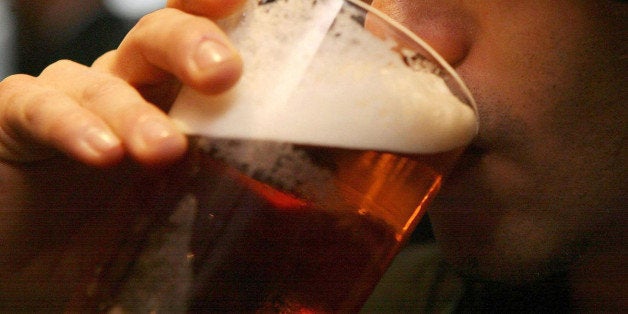
Problem drinking is more pervasive and less frequently treated than previously thought, thanks to an updated definition of what constitutes "alcohol use disorder."
A study published on June 3 in the journal JAMA Psychiatry surveyed U.S. adults 18 and older on their alcohol consumption habits between 2012 and 2013. Results were analyzed using the definition of alcohol use disorder in the latest edition of the Diagnostic and Statistical Manual of Mental Disorders, which was published in 2013.
While older editions divided alcohol use disorder into two categories, alcohol abuse and alcohol dependence, the new definition eliminated categories. Instead, it measures alcohol use disorder using a spectrum of abuse criteria ranging from mild to severe.
The expanded definition of AUD includes a new criterion -- "craving" for alcohol -- and eliminates another: legal issues surrounding alcohol abuse. But the more significant change has been an update to the criteria for a diagnosis. Rather than a single definition, there's now a spectrum on which people can be diagnosed and treated based on whether they exhibit a few of symptoms or a more profound disorder.
The criteria list is 11 items long. Mild abuse constitutes 2-3 criteria, and severe abuse diagnoses requires 6 or more symptoms. These include:
- "Craving or a strong desire or urge to use alcohol"
- Drinking that is "often taken in larger amounts or over a longer period than was intended"
- "Continued alcohol use despite having persistent or recurrent social or interpersonal problems" related to its use.
Using these metrics, researchers found that some demographics were more at risk than others. Thirty-six percent of men, 32.6 percent of white respondents and 43.4 percent of Native American respondents suffering from AUD in their lifetime. The same demographics were likely to suffer from alcohol use disorder in the past 12 months. Nearly 18 percent of men, 14 percent of white respondents and 19.2 percent of Native American respondents suffered from AUD in the past year.

Younger and never-married adults also carried a high risk. Nearly 27 percent of individuals between the ages of 18 and 29 and a quarter of never-married adults suffered from AUD in the past year. In comparison, 37 percent of young adults and 35.5 percent of people who have never married suffered from AUD in their lifetime.
The researchers also confirmed that alcohol use disorder often accompanies other mental illnesses, such as major depression and bipolar disorder.
George Koob, the director of the National Institute on Alcohol Abuse and Alcoholism, wasn't directly involved in the study, but the results came as no surprise.
"We have a serious alcohol misuse problem in this country," Koob told The Huffington Post. "It costs us in productivity, it costs us in health care in particular, and it costs us in lives -- drunk driving is a large contributor to fatalities on the freeway."
Currently, the United States loses 88,000 lives and $224 billion to alcohol each year, according the Centers for Disease Control and Prevention. "Seventy percent of Americans drink and most of them don't have a problem," Koob said. "But it's pretty clear that there is a group that does have a problem."
Despite being such a common condition -- according to the National Institutes of Health, 10.8 million men and 5.8 million women experienced an AUD in 2013 -- stigma surrounding alcohol use disorder is a major barrier to individuals seeking help. As psychiatry professor John F. Kelly and Drs. Sarah E. Wakeman and Richard Saitz wrote in an Op-Ed in the American Journal of Medicine in January:
There are two main factors that influence stigma: cause and controllability. Stigma decreases when people perceive that the individual is not responsible for causing his/her problem (ie, "It’s not his fault") and when he or she is unable to control it (ie, "She can’t help it").
Perhaps in part because of this stigma, respondents in the new JAMA Psychiatry study were largely untreated. Only 7.7 percent of individuals who reported having AUD in the previous year sought treatment for their disorder. In comparison, 19.8 percent of individuals with a lifetime AUD sought treatment.
Denial among people with alcohol use disorder is another barrier to treatment. "Anyone who has known an alcoholic knows [denial] is part and parcel of the disorder," Koob said. "There are a lot of people who think they are functioning just fine and they're not."
Another large piece of the puzzle is that individuals with AUD may not know about new treatments available to them. Koob pointed out there are FDA-approved medications to treat alcoholism -- such as acamprosate and naltrexone -- that, for the most part, are not being prescribed by doctors or used by patients.
A 2014 study published in JAMA analyzed findings from studies of acamprosate and naltrexone since 1970. It found that both were associated with a reduced return to drinking. “They’re not blockbuster," Dr. Daniel E. Jonas, lead author of the study, told the New York Times last year. "They’re not going to work for everybody. But they can make a difference for a lot of people.”



